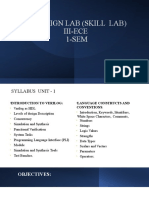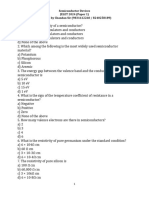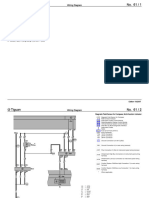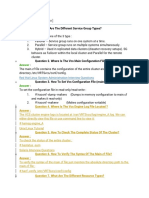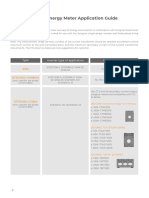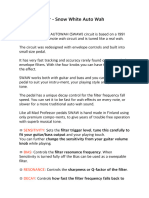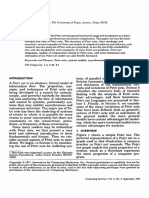Hardware Description Language (HDL) What is the need for Hardware Description Language?
? Model, Represent, And Simulate Digital Hardware
Hardware Concurrency Parallel Activity Flow Semantics for Signal Value And Time
Special Constructs And Semantics
Edge Transitions Propagation Delays Timing Checks
�VERILOG HDL Basic Unit A module Module
Describes the functionality of the design States the input and output ports
Example: A Computer
Functionality: Perform user defined computations I/O Ports: Keyboard, Mouse, Monitor, Printer
�Module General definition
module module_name ( port_list ); port declarations; variable declaration; description of behavior endmodule
Example
module HalfAdder (A, B, Sum Carry); input A, B; output Sum, Carry; assign Sum = A ^ B; //^ denotes XOR assign Carry = A & B; // & denotes AND endmodule
�Lexical Conventions Comments
// Single line comment /* Another single line comment */ /* Begins multi-line (block) comment All text within is ignored Line below ends multi-line comment */
Number
decimal, hex, octal, binary unsized decimal form size base form include underlines, +,-
String
" Enclose between quotes on a single line"
4
�Lexical Conventions (cont.) Identifier
A ... Z a ... z 0 ... 9 Underscore
Strings are limited to 1024 chars First char of identifier must not be a digit Keywords: See text.
Operators: See text. Verilog is case sensitive
5
�Description Styles Structural: Logic is described in terms of Verilog gate primitives Example: not n1(sel_n, sel); and a1(sel_b, b, sel_b); and a2(sel_a, a, sel); or o1(out, sel_b, sel_a); b sel
n1 a1
sel_b
sel_n
a
a2 sel_a
o1
out
�Description Styles (cont.) Dataflow: Specify output signals in terms of input signals Example: assign out = (sel & a) | (~sel & b); b sel
sel_b sel_n
out
sel_a
a
7
�Description Styles (cont.) Behavioral: Algorithmically specify the behavior of the design
Example: if (select == 0) begin out = b; end else if (select == 1) begin out = a; end
a b
2x1 MUX sel
Black Box
out
�Structural Modeling Execution: Concurrent Format (Primitive Gates):
and G2(Carry, A, B);
First parameter (Carry) Output Other Inputs (A, B) - Inputs
�Behavioral Modeling Example:
module mux_2x1(a, b, sel, out); input a, a, sel; output out; always @(a or b or sel) begin if (sel == 1) out = a; else out = b; end endmodule
Sensitivity List
10
�Behavioral Modeling (cont.) always statement : Sequential Block Sequential Block: All statements within the block are executed sequentially When is it executed?
Occurrence of an event in the sensitivity list Event: Change in the logical value
11
�Procedural Constructs Two Procedural Constructs
initial Statement always Statement
initial Statement : Executes only once always Statement : Executes in a loop Example:
initial begin Sum = 0; Carry = 0; end always @(A or B) begin Sum = A ^ B; Carry = A & B; end
12
�Conditional Statements if Statement Format:
if (condition) procedural_statement else if (condition) procedural_statement else
procedural_statement Example:
if (Clk) Q = 0; else Q = D;
13
�Verilog: The Module
�Gate Level Description
�Procedural Assignment with always
�Verilog Registers
�Mix-and-Match Assignments
�The case Statement
�The Power of Verilog: Integer Arithmetic
�Dangers of Verilog: Incomplete Specification
�Avoiding Incomplete Specification
�The Sequential always Block
�Blocking vs. Nonblocking Assignments
�Assignment Styles for Sequential Logic
�Test Bench - Generating Clock (cont.)
Initialize the Clock signal initial begin Clock = 0; end Caution: Clock is of data type wire, cannot be used in an initial statement Solution: reg Clock; initial begin Clock = 0; end forever loop can also be used to always begin generate clock #10 Clock = ~ Clock; end
26










